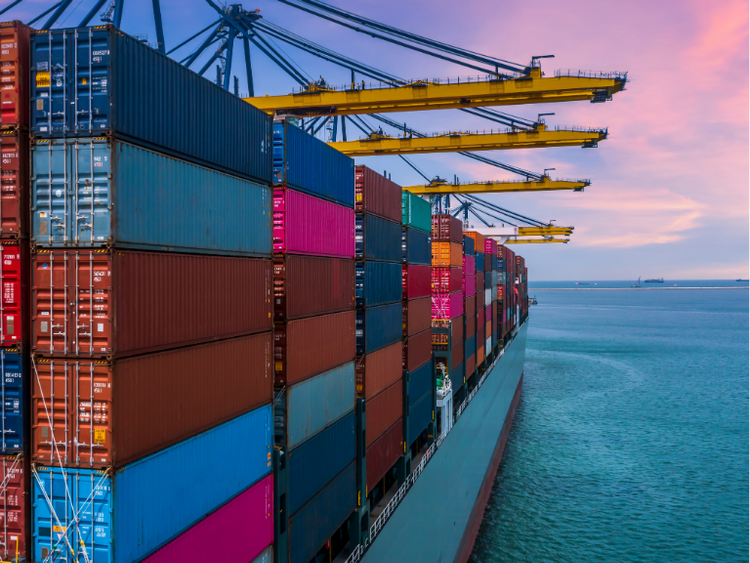Distribution

September 11, 2025
Looming USTR port fees will add to freight costs
Written by Greg Wittbecker
The United States Trade Representative (USTR) port fees will take effect on Oct. 14.
Here’s a refresher on the fees:
- Establishes a $50 per net ton fee on Chinese vessel owners and operators, increasing annually by $30 increments to reach $140 per net ton by 2028.
- Non-Chinese operators using Chinese-built vessels face lower rates of $18 per net ton or $120 per discharged container, whichever is higher.
All this is designed ostensibly to help shift global shipbuilding away from Chinese dominance, encouraging others to invest.
This has had some impact, with South Korea’s Hanwha Group announcing a $5 billion investment in its Hanwha Philly Shipyard.
Any domestic investment will take time to have a material effect on non-Chinese maritime tonnage. Meanwhile, the market is handicapping what it will mean to the existing carriers.
Recent analysis by HSBC Bank indicates the port fees will have a devastating effect on two of China’s major container lines:
- China Shipping Holdings (CSH) could lose 74% of its 2026 profits and face port fees of $1.5 billion.
- Orient Overseas Container Line (OOIL) could lose 65% of its profits and incur $654 million in port fees.
Carriers are realigning their fleets to mitigate exposure:
- Non-Chinese carriers such as Maersk and Hapag-Lloyd are using Korean-built ships on their transpacific routes.
- Chinese carriers may bypass U.S. ports by transhipping through Canadian, Mexican, or Caribbean ports.
- Chinese carriers may also leverage their shipping alliance partners with CMA, CGM, and Evergreen to employ the latter’s non-Chinese vessels into the U.S. and swap their Chinese capacity into non-U.S. routes.
However, there is a limit to such moves, and there is concern that overall capacity availability into the U.S. will shrink, raising rates in time.
This reduction in capacity may be offset by the downward trend in inbound U.S. container volume because of the tariffs. The U.S. National Retail Federation estimates 2025 full-year volumes will be down 5.6%. Bear in mind there was massive front-end loading in the first seven months of the year, so this means inbound shipments could plunge 17.5% between August and December.
Why This Matters
The USTR port fees are much like the tariffs – a yet-to-be-realized hit to the U.S. economy. While the Chinese carriers are clearly going to take a major financial hit, eventually the market is going to have to price Chinese capacity back into the U.S., as there simply is not enough non-Chinese capacity around to fulfill our demands. Just like the Section 232 tariffs, eventually the market has to price replacement cost, and ocean freight rates will have to embed these costs.
We may not feel the effects in 2025, but in 2026, the market will start to see these fees creeping into transpacific rates, which will raise the cost of everything coming from Asia.
That might be good for domestic aluminum demand, as importers may finally decide to onshore what they have held off on for a long time.








